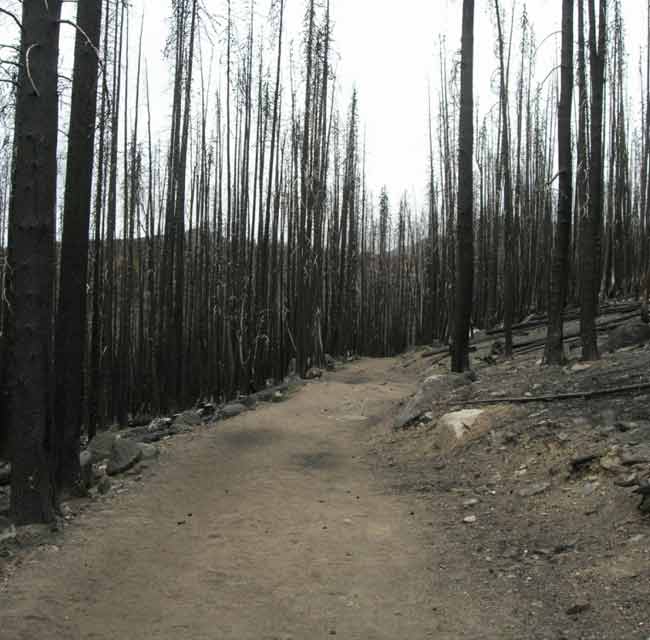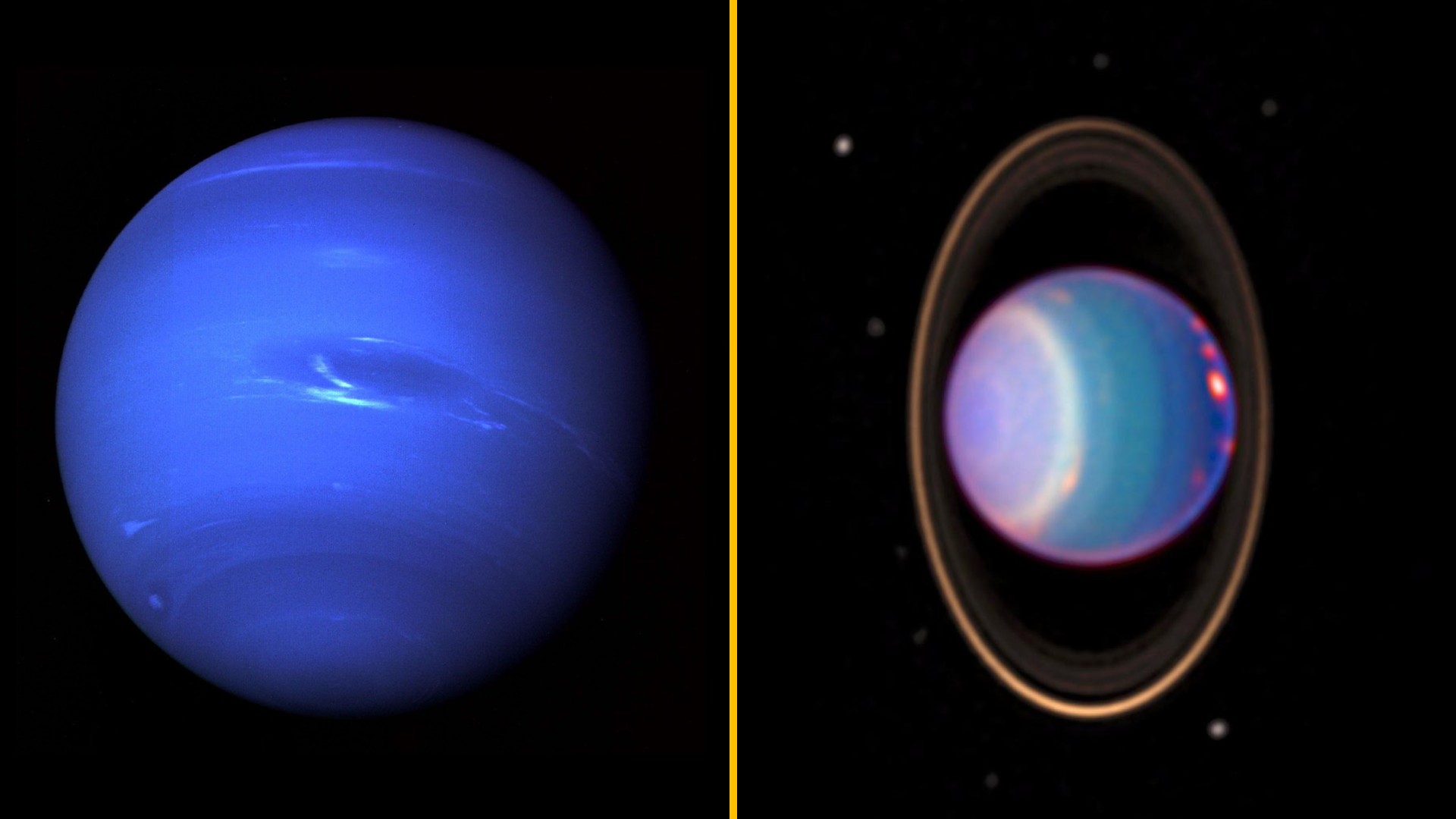
This Behind the Scenes article was provided to LiveScience in partnership with the National Science Foundation.
For nearly a year, I have been sifting through news headlines such as, "Thousands evacuated in Northern California wildfire," "Erratic winds prompt new evacuations in California," "New crews called in to fight California wildfire," and, "Death challenges firefighting strategy."
Wildfires in California are a threat not only to residents living in the wildland-urban interface, but also to firefighters. Some believe it is not worth the lives of firefighters to save these communities from catastrophic wildfires. In May 2007, "USA Today" quoted Tom Harbour, national director of fire and aviation management for the Forest Service, saying, "We are not going to die for property. It's time for homeowners to take responsibility for the protection of their homes."
But many people think that letting a fire destroy so many homes—expensive or not—will hurt the welfare of Californians, and put a big damper on the economy. The question is: how do we save the people, the homes, and the firefighters?
As an economist working with fire ecologists and fire managers, I walk a fine line between two logical worlds—a place where one plus one does not always equal two. Economists, as social theorists, believe that people behave rationally and can make wise decisions for themselves. Many fire managers disagree: If everyone behaved rationally, why would so many Californians choose to live in high fire risk areas? Why wouldn't firefighters abandon a fire if their lives could be at stake?
I never doubt that people can make wise choices for themselves. We just need to get into their heads and figure out why their choices appeal to them. If we understood how people made choices, then perhaps it wouldn't seem so bizarre that Californians would risk everything they own to live in fire-prone areas. Maybe we could even prevent the death of firefighters.
Between logic and physics
Get the world’s most fascinating discoveries delivered straight to your inbox.
As a social scientist working with issues in the natural sciences, I manage to wedge myself in between the cracks of economic logic and the simple laws of physics as manifested in fire behavior. Economists often make the logical assumption that, as more money is invested into research and development of technologies, the technologies will become better. Although this is generally true, technology also has limits, and requires time to advance. Current technologies have not been able to provide a solution that society can accept, despite the increasing proportion of the U.S. Forest Service budget dedicated towards firefighting every year.
Catastrophic fires in Southern California are often driven by high-speed winds known as the Santa Ana winds, which can blow at 100 mph in extreme cases. During the months of late summer and early autumn, fire risks are increased due to dry fuels, but without Santa Ana winds, fires are much more manageable and easier to contain. But we can't be sure that wind is the only factor playing into catastrophic fires, and this is something that I am investigating in my research. Do vegetation, rain, relative humidity, and temperature matter? Or does the existence of wind dominate the effect? There has been an ongoing dialogue in the literature debating this question.
Working with wildfires challenges me to push economics to new limits, to expand our understanding of how people rationalize and respond to conditions in the natural world. In turn, I look to fire managers to recognize that managing people can be just as difficult as managing fires.
What to do?
So, how do we save the people, homes, and firefighters? To answer this question, I identify the source of the problem, and tackle the manageable aspects of it. It is impractical to try to stop high-speed winds, eliminate dry vegetation acting as fuels, or forcefully relocate whole communities of people. It is, however, manageable to influence people's perception of the risk associated with wildfires. If people believe that their homes and belongings can easily be recovered, then there would be less pressure for firefighters to defend the homes. Then, the number of casualties can be reduced.
Recovering homes and belongings lost to fires is the job of insurance companies. Therefore, protecting the solvency of insurance markets exposed to California fires is in the best interest of every taxpayer in California.
I focus my research on re-insuring insurance companies exposed to wildfire risks. Re-insurance is insurance purchased by an insurance company to protect the company against overexposure of financial risk in light of catastrophic events (e.g., hurricanes, earthquakes, floods, or wildfires). With wildfires, the most relevant lines of business are fire, homeowners, and commercial policies. Insurance companies with a large market share in these lines of business in wildfire-prone areas have motivation for buying re-insurance to hedge against the risk of large wildfire events.
Here is how the hedge can work. I look at whether the financial market has the potential to sell re-insurance to insurance companies through the trading of weather derivatives. A weather derivative is a financial instrument used by companies to reduce the risk associated with unfavorable weather events. The seller of the derivative (the investor) accepts the weather risk and charges a premium to the buyer (the insurance company): if the unfavorable weather does not occur, then the investor keeps the premium, and pays nothing to the company facing the weather risk. If adverse weather occurs, then the investor must make a pay-out to the insurance company. Usually, the premium is considerably smaller than the pay-out. The rationale behind this is that the probability of catastrophic events is extremely small, such that a small premium with a large pay-out is still attractive to the investor, since he/she is more likely to pay nothing. In the U.S., weather derivatives are traded on the Chicago Mercantile Exchange (CME) and the Chicago Board of Trade (CBOT).
How do we know if the hedge works? I look at the average rate of return of assets and options sold on the market. If an investor can increase his/her average rate of return by selling a re-insurance scheme to an insurance company without increasing his/her risk exposure, then the re-insurance scheme is attractive to both investors and buyers, and ought to be traded on the market. Since the market does not currently trade weather derivatives for hedging wildfires, assumptions must be made in order to evaluate the economic value of such risks. I also consider the likelihood of catastrophic fires given the vegetative cover, weather patterns, and other factors.
Doing this research requires the input of a diverse group of experts, including fire ecologists, meteorologists, and fire economists from the U.S. Forest Service Pacific Northwest and Pacific Southwest Laboratories, who advise me on the fire and weather patterns in California from first-hand experience. I also receive advice from finance and insurance experts at the University of Washington, Wageningen University in the Netherlands, and Humboldt University at Berlin, Germany.
Carefully assembling and distilling information from this diverse group of experts plays a key role in the quality and success of my research. More important, my ability to connect the ideas across diverse fields of science has been refined through a year-long interdisciplinary training supported by the University of Washington’s Multinational Collaborations on Challenges to the Environment (MCCE) Integrative Graduate Education and Research Traineeship (IGERT). This experience provided me with the intellectual tools to identify, on the one hand, the gaps between fields of science, and on the other, a means of merging them to discover new solutions to environmental problems.
- Can a Wildfire Ever Put Itself Out?
Editor's Note: This research was supported by the National Science Foundation (NSF), the federal agency charged with funding basic research and education across all fields of science and engineering. See the Behind the Scenes Archive.


